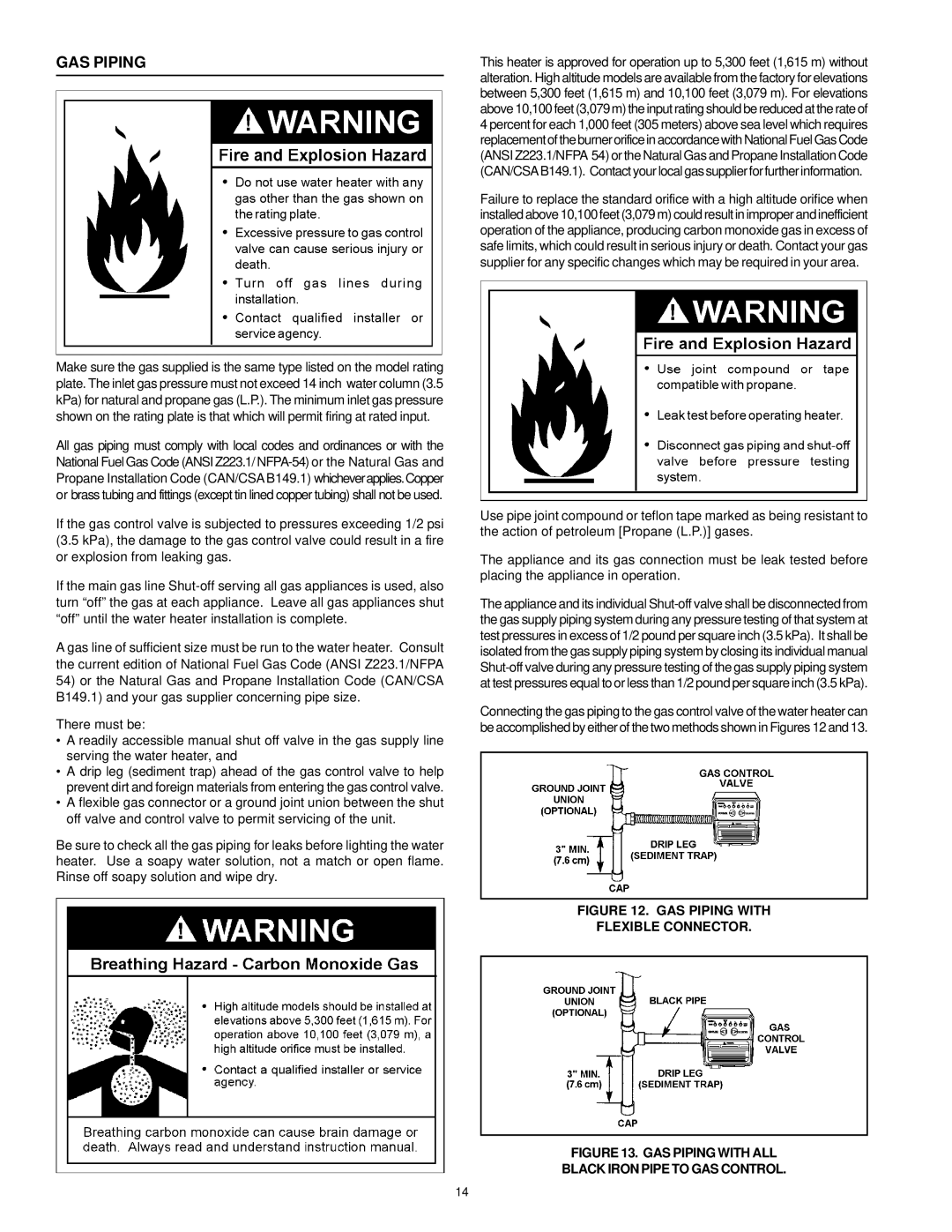ARGSS02708 specifications
The A.O. Smith ARGSS02708 is a standout product in the realm of water heating solutions, designed with a focus on efficiency, durability, and user convenience. This particular model exemplifies the cutting-edge technology that A.O. Smith is known for, making it a preferred choice for both residential and commercial applications.One of the main features of the ARGSS02708 is its high efficiency. The unit employs advanced insulation techniques, which minimize heat loss and ensure that energy is utilized effectively. With an Energy Factor that meets or exceeds industry standards, this water heater can significantly reduce energy bills, making it an environmentally friendly choice that doesn't compromise on performance.
Another notable characteristic of the A.O. Smith ARGSS02708 is its robust construction. Built with high-quality materials, this water heater is designed to withstand the wear and tear of daily use. The units are manufactured with a coating that helps resist corrosion, which not only prolongs the lifespan of the heater but also ensures that it operates safely and reliably over time.
The ARGSS02708 also incorporates smart technology that enhances user experience. It features an intelligent electronic control panel that allows for easy monitoring and adjusting of temperature settings, ensuring optimal comfort. This user-friendly interface provides real-time feedback, making it straightforward for users to manage their hot water needs efficiently.
Moreover, the model supports faster recovery rates compared to traditional water heaters. With its powerful heating elements, the ARGSS02708 can provide a steady supply of hot water at consistent temperatures, catering to households or businesses with high hot water demands.
Safety is another critical aspect that A.O. Smith prioritizes in the design of the ARGSS02708. The unit is equipped with multiple safety features, including thermal cut-off switches and pressure relief valves, which ensure safe operation under varying conditions.
In summary, the A.O. Smith ARGSS02708 emerges as an excellent option for those seeking a reliable, efficient, and user-friendly water heating solution. Its combination of advanced technology, durable construction, high efficiency, and safety features make it a commendable investment for anyone looking to enhance their water heating experience.

